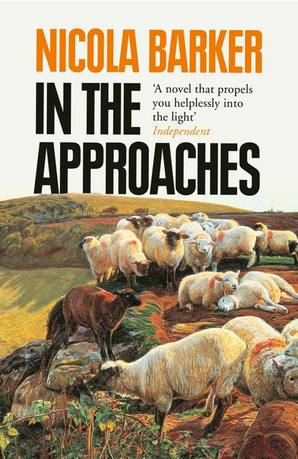Our book group choice for June 2015 is In the Approaches by Nicola Barker. Nicola Barker’s readers are primed to expect surprises, but her tenth novel delivers mind-meld on a metaphysical scale
In the Approaches is a novel by Nicola Barker that tells the story of a group of people who come together in the coastal village of Pett Level in 1984. The novel is set against the backdrop of the Cold War, and it explores themes of faith, redemption, and the power of the human spirit.
The novel opens with the arrival of Miss Carla Hahn, a former nanny who is now adrift in life. Carla is drawn to Pett Level by its remoteness and its sense of peace. She soon befriends a group of locals, including Mr. Franklin D. Huff, a retired American military officer; Bran Cleary, a mural artist; and his daughter, Orla, a half-Aboriginal thalidomide child.
As Carla gets to know the people of Pett Level, she begins to uncover their secrets. She learns that Bran was once involved in the Troubles in Northern Ireland, and that Orla may have been a saint or an IRA informer. Carla also begins to question her own beliefs, and she wonders if there is more to life than what she can see.
In the Approaches is a complex and challenging novel, but it is also a deeply moving one. Barker’s writing is lyrical and evocative, and she creates a vivid portrait of a small community in crisis. The novel is full of humor, but it also deals with serious themes such as faith, redemption, and the power of the human spirit.
Here are some additional details about the novel:
- The title, In the Approaches, refers to the tide tables, which show the times when the tide is coming in or going out. This is a significant detail in the novel, as the characters are often caught between two worlds, the old and the new, the past and the present.
- The novel is set in 1984, a time of great political and social change. The Cold War is still in full swing, and the threat of nuclear war is ever-present. This setting provides a backdrop of tension and uncertainty, which reflects the inner turmoil of the characters.
- The novel is full of religious imagery, including references to saints, angels, and the afterlife. This imagery is used to explore the characters’ spiritual journeys, and it also suggests that there is more to life than what we can see.
- The novel is told from multiple perspectives, which allows the reader to see the events from different angles. This creates a rich and complex narrative, and it allows the reader to connect with the characters on a deeper level.
Discussion Questions for In the Approaches
- Barker said: “This book is not about the interesting, fascinating story. That would be too easy. It is about people who are affected by a story but who feel insignificant. It is about being in a place that is not anywhere in particular, about not being the person who is the main event.” What do you think about this approach to the literary novel and how does this decision affect the way the book unfolds for the reader?
- The credits compare her to many famous English writers such as Muriel Spark etc. Is Nicola Barker a quintessentially English novelist? Is she writing about an England that isn’t typically centre stage in great Literature but deserves to be?
- Nicola Barker’s pineal gland was damaged during a childhood illness – it affects waking and sleeping and led to a sleep disorder. One side-effect is that Barker, who has no clear-cut religious faith, nevertheless feels a powerful connection to mystical worlds. “The movement between spirituality and everyday life is more fluid for me. It is not as strange for me as it is for other people.”
- How well do you think the mystical, religious elements of the book worked alongside Barker’s celebration of the ordinary and the everyday? Faith, love, forgiveness, suffering, resurrection – they all feature heavily.
- One reviewer described the book as “an extended shaggy dog story about faith told as a farce.” What do you think about the comical and farcical elements of the book – the chapter’s told from the parrot’s pov, Mr Huff’s epic pilgrimage? Do you think these are the parts of the book which work best for instance?
- What do you make of the ‘death of the author’ in the book – the characters talking back, the knowing references to other books? What do you think is going on at these moments?
- There is strong sense of place in the novel (Barker has a home in Hastings). What do you think this adds to the story?
- Do you feel more affinity for Miss Hahn or Mr Huff? What do you make of their love story?
- Do you have a favourite character who is hiding in the approaches – doesn’t have to be human btw.
- What is Barker encouraging us to think about by setting the book in 1984?
There are a lot of twists and turns to the plot and a lot of information – landslides, thalidomide, the IRA, religion, travellers, car bombs, being the product of rape, accidents – many layers. Did all these layers work for you? - What do you think about the ending? Does the book offer redemption? Does Carla find peace? Does Mr Huff find the answers to his questions? Do you think he will leave with Mrs Meadows after all? Is it more that Carla is finally the centre of someone’s story?
Individual Ratings
DKB's Rating 




Catherine's Rating 




Baljit's Rating 




Jo's Rating 




EmmaJ's Rating 





